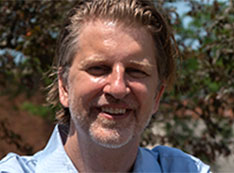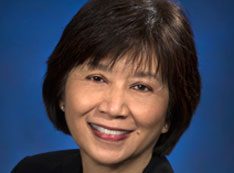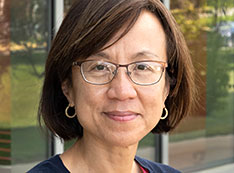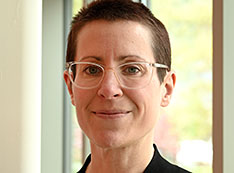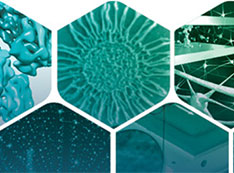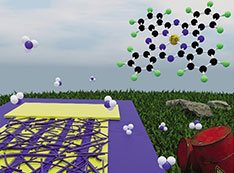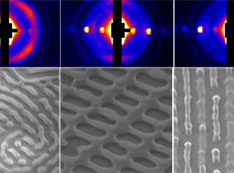Remote Operations Are Making the World a Little Smaller for Nanoscale Research
University Students in Puerto Rico are able to get a closer look at their materials using instruments at Brookhaven Lab in New York
May 17, 2023
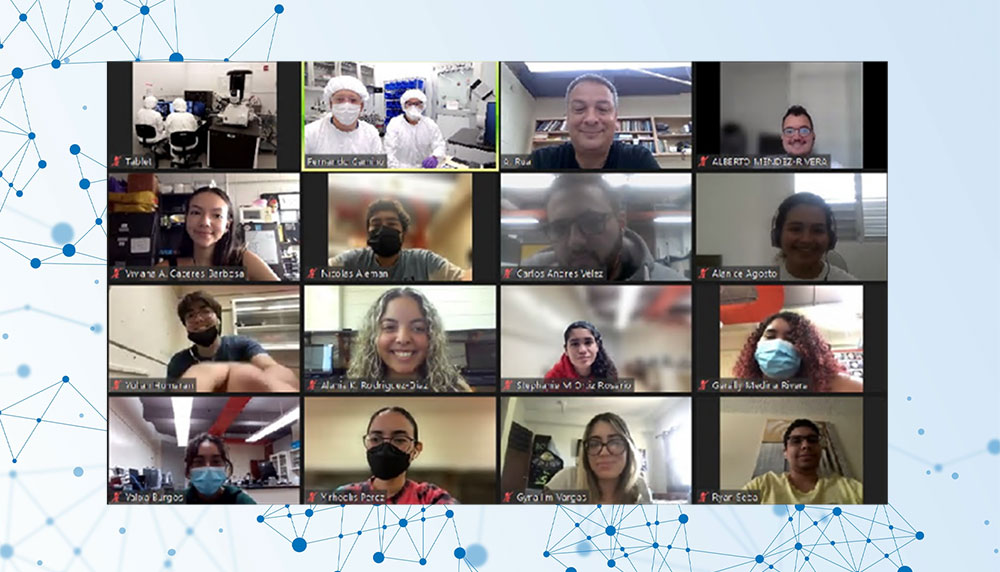
Participants of the first Fall 2022 remote lecture/demonstration between students of Prof. Rua's Advanced Level Laboratory course in the University of Puerto Rico (Mayagüez campus) and CFN scientists in the SEM/FIB laboratory in the cleanroom of the CFN in Long Island, New York.
When the pandemic forced us to keep our distance, people quickly found new ways to come together. By improving existing technologies and developing entirely new ones, we learned how to work, socialize, and share ideas without having to leave the solitary comfort of our living spaces. While this gave us the ability to take back parts of the activities we missed, it also allowed us to connect in new and interesting ways. For scientists at the Center for Functional Nanomaterials (CFN) at the U.S. Department of Energy’s (DOE) Brookhaven National Laboratory, this meant being able to make cutting edge scientific instruments available to researchers around the globe.
A Lecture Hall Built Across an Ocean
In 2022, Physics Professor Armando Rúa and his students at the University of Puerto Rico-Mayagüez were able to use instruments residing 1,600 miles away from them at Brookhaven’s CFN. The class was conducting research on a vanadium oxide (V4O7) thin film sample that was grown in Professor Rúa’s lab and shipped to CFN. These films have come to the attention of researchers looking at applications in new and innovative electronics due to their resistive switching characteristics, when resistance is changed in a non-volatile, reversible way under a strong electric current. One of these applications is neuromorphic computing, a way to engineer computers that mimic biological nervous systems.
Scientists at CFN participated in a series of remote lectures with 25 students enrolled in Professor Rúa’s Advanced Level Laboratory course, an essential skill-building class that is required for all physics majors. In these lectures, students learned about the capabilities and operation of CFN’s dual scanning electron microscope (SEM) and focused ion beam (FIB) Helios G5. In this system, the ion beam is used as a nanoscale milling machine and the electron beam is used to image the results with ultra-high resolution. Rúa’s students were able to use the cross-sectional processing and imaging capabilities of the dual-beam system to measure the thickness of the thin film sample they prepared as well as its physical and chemical properties.
At the University of Puerto Rico Río Piedras, Chemistry Professor Dalice Piñero Cruz and her students collaborated with CFN scientists to use the remote capabilities of the FEI Talos F200X, a high-resolution analytical scanning/transmission electron microscope (S/TEM), to characterize metal phthalocyanine nanowires grown directly on electrical contacts. These wires are used in gas sensor devices that monitor environmental recovery zones for toxic gases. The detectors created with this research could detect ammonia at 40 parts per billion without significant cross-reactivity from other gases. Teams at the remote computer at Río Piedras and the bridge computer in the microscope room at CFN used Zoom to communicate as they jointly operated the microscope for this research. The remote connection scheme CFN staff had developed allowed simultaneous operation of the microscope from both locations without significant interference.
Building a Bridge to Puerto Rico
Controlling a powerful instrument over a thousand miles away requires a strong, secure, stable connection. To ensure this, the remote computer in Puerto Rico connects to a Brookhaven Lab network using an anonymous, encrypted connection called a virtual private network (VPN). A VPN is necessary to ensure a secure connection that complies with the cybersecurity requirements of Brookhaven Lab.
A bridge computer, located in the instrument room, is necessary to bridge the gap between the remote computer and the instrument’s computer. It requires one ethernet card to connect to the Brookhaven Lab network (and to the remote computer through the VPN) and another to connect to the instrument’s computer locally. The instrument computer runs the instrument user interface (IUI) program, where researchers can input commands to operate the corresponding microscope. With this connection configuration, it is possible to transfer control of the IUI from the instrument computer to the remote computer using two different remote desktop applications.
The remote desktop application linking the bridge computer to the instrument computer allows the operation of the IUI from the bridge computer. The second remote desktop application from the remote computer to the bridge computer permits the operation of the bridge computer from the remote computer. The bridge computer desktop is used as a relay that allows the remote computer in Puerto Rico to see and control the IUI to remotely operate the instrument. This setup was successfully implemented on several powerful electron microscopes at CFN.
“Introducing students to sophisticated instrumentation has long been a dream of mine,” said Fernando Camino, Staff Scientist at CFN. “It’s been especially rewarding to provide accessibility to underrepresented and minority serving institutions. Over 50% of professor Rúa’s students were female, so it was a good opportunity to encourage women in STEM. We aim to continue applying CFN’s remote capabilities in research and educational projects and hope to reach out far, really far, to students in remote and rural schools, like in the Peruvian Andes.”
Brookhaven National Laboratory is supported by the Office of Science of the U.S. Department of Energy. The Office of Science is the single largest supporter of basic research in the physical sciences in the United States and is working to address some of the most pressing challenges of our time. For more information, visit science.energy.gov.
Follow @BrookhavenLab on Twitter or find us on Facebook.
2023-21276 | INT/EXT | Newsroom





